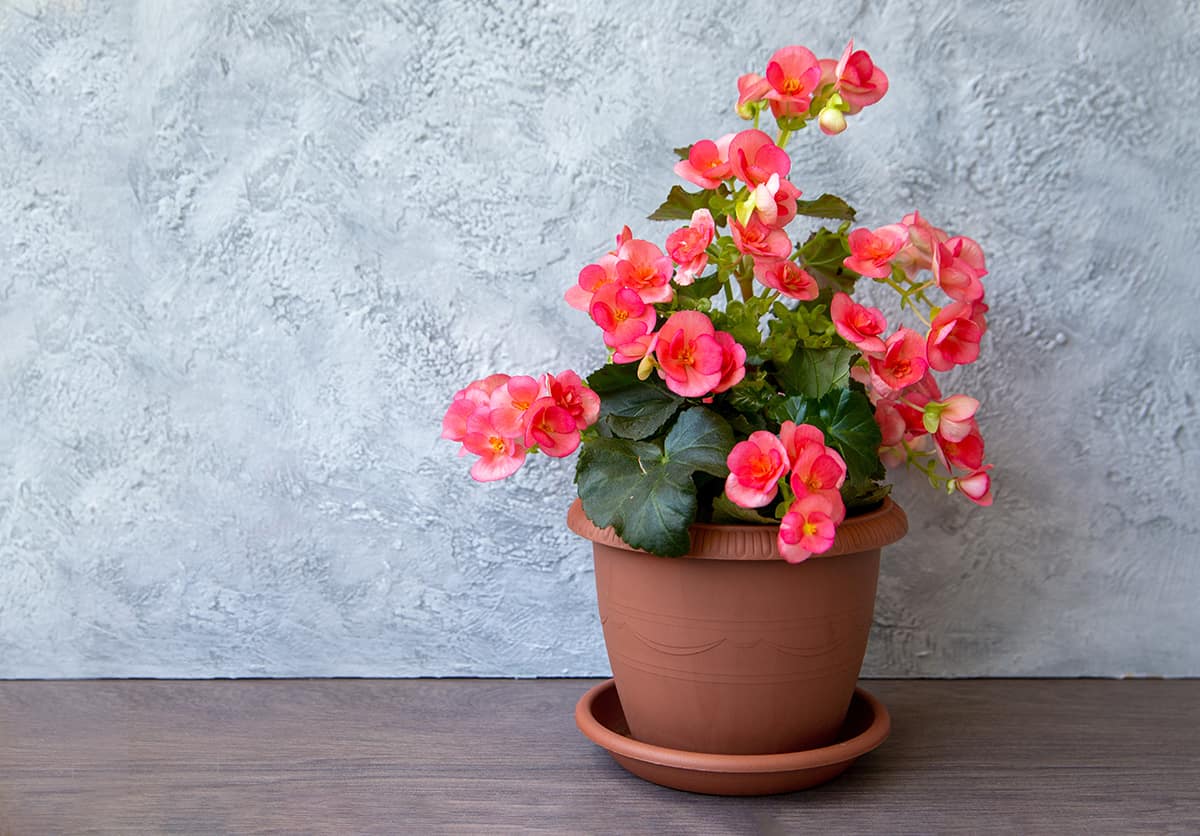Have you ever noticed how some plants seem to bring a room to life with just a pop of color? Begonias might be just what your home needs. These vibrant plants, with their diverse leaf shapes and brilliant blooms, can brighten any space. This guide will walk you through the essentials of growing and caring for begonias, ensuring your plants remain as lively as the day you brought them home.
| Common Name | Begonia |
| Botanical Name | Begonia spp. |
| Family | Begoniaceae |
| History & Origin | Native to tropical and subtropical regions |
| Plant Type | Perennial, annual in some climates |
| Mature Size | Varies; typically 6 inches to 2 feet tall |
| Sun Exposure | Bright, indirect light; some tolerate shade |
| Soil Type | Well-draining, rich in organic matter |
| Soil pH | Slightly acidic to neutral (5.5 to 7) |
| Temperature | Prefers 60-75°F (16-24°C) |
| Watering | Keep soil consistently moist but not waterlogged |
| Fertilizing | Feed monthly during growing season |
| Bloom Time | Spring to fall |
| Flower Color | Red, pink, white, or yellow |
| Hardiness Zone | 10-11 outdoors, commonly grown indoors |
| Toxicity | Non-toxic to humans, toxic to pets |
| Common Problems | Powdery mildew, root rot, spider mites |
Table of Contents
Light
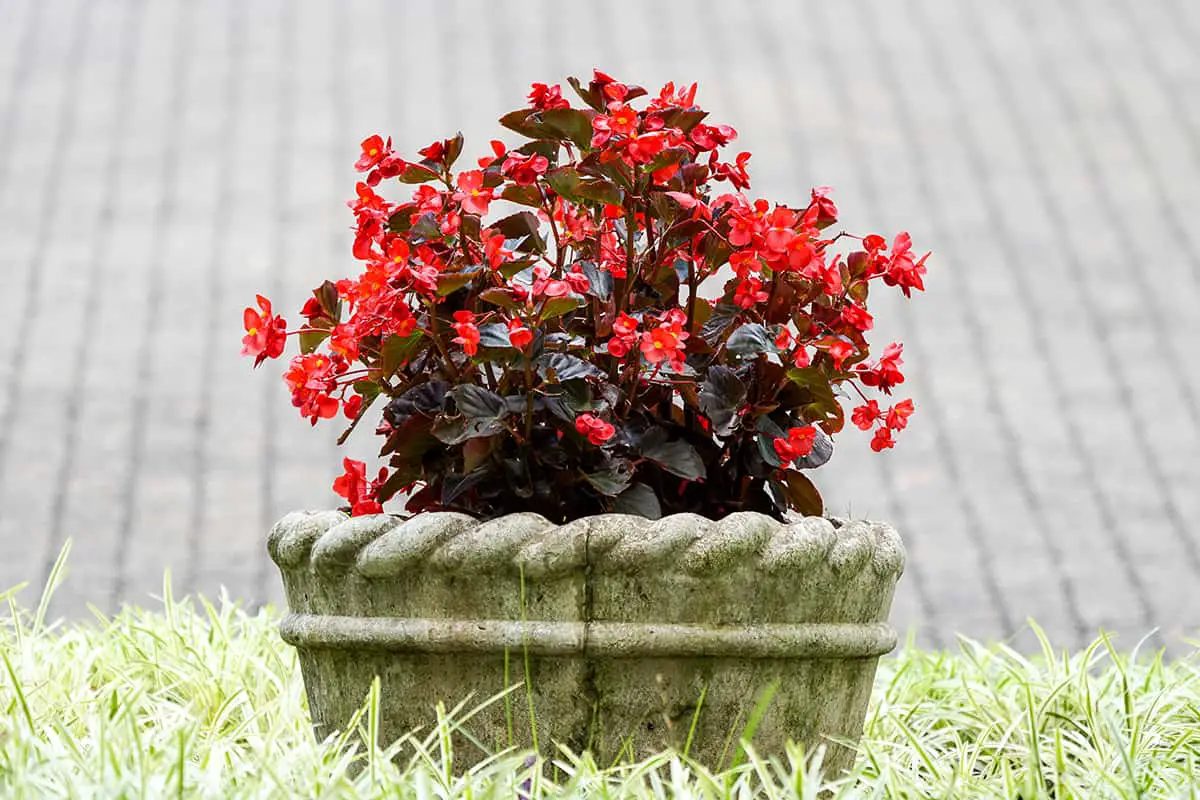
Start by placing your plant in a partly sunny location outdoors or an indirectly lit area indoors. Be cautious, as some begonia types do not tolerate direct sunlight and should instead be placed in the shade.
To ensure maximum growth, begonias require a specific day length. For instance, the Rex Begonia needs 14 hours of day length. If you’re growing begonias indoors, you can use LED plant grow lights to maintain this duration. Ensure that the light source is neither too weak nor too strong; around 1000 foot-candles is the suggested intensity. Additionally, you can minimize the harshness of direct sunlight with a shading curtain.
Make sure to monitor light exposure and adjust it according to the begonia’s response. Keep an eye on the plant’s leaves; should they start to wither or change color, it may be indicative of excess sunlight or insufficient light levels.
Soil
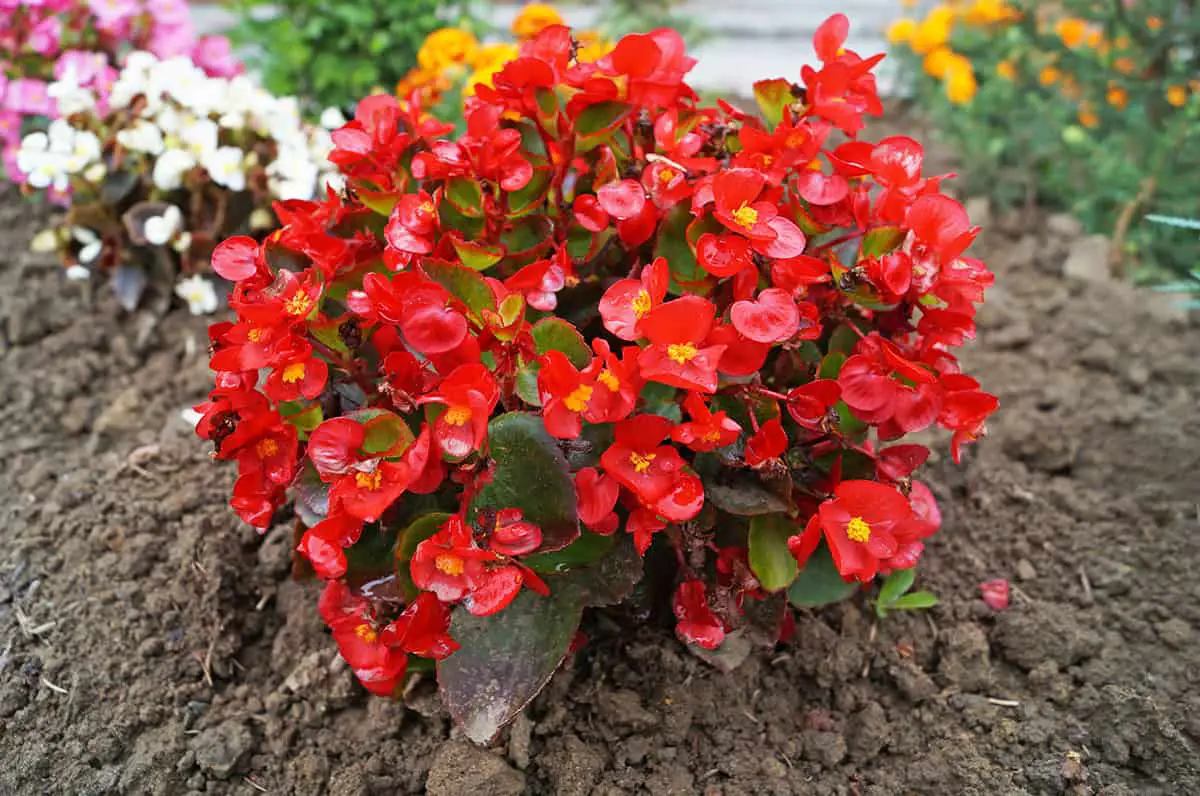
You should choose a well-draining potting mix with a slightly acidic pH level, ideally between 5.5 and 6.5.
To create a suitable soil blend for your begonias, consider combining equal parts of peat moss, vermiculite, and perlite. This combination ensures proper aeration, moisture retention, and drainage, which are crucial for begonia development.
While planting your begonia, make sure the container has drainage holes to avoid waterlogging. Excessive moisture may lead to root rot and damage your plant. Frequent watering is not required; instead, let the soil dry out slightly between waterings. The soil should remain moist but not wet.
Water
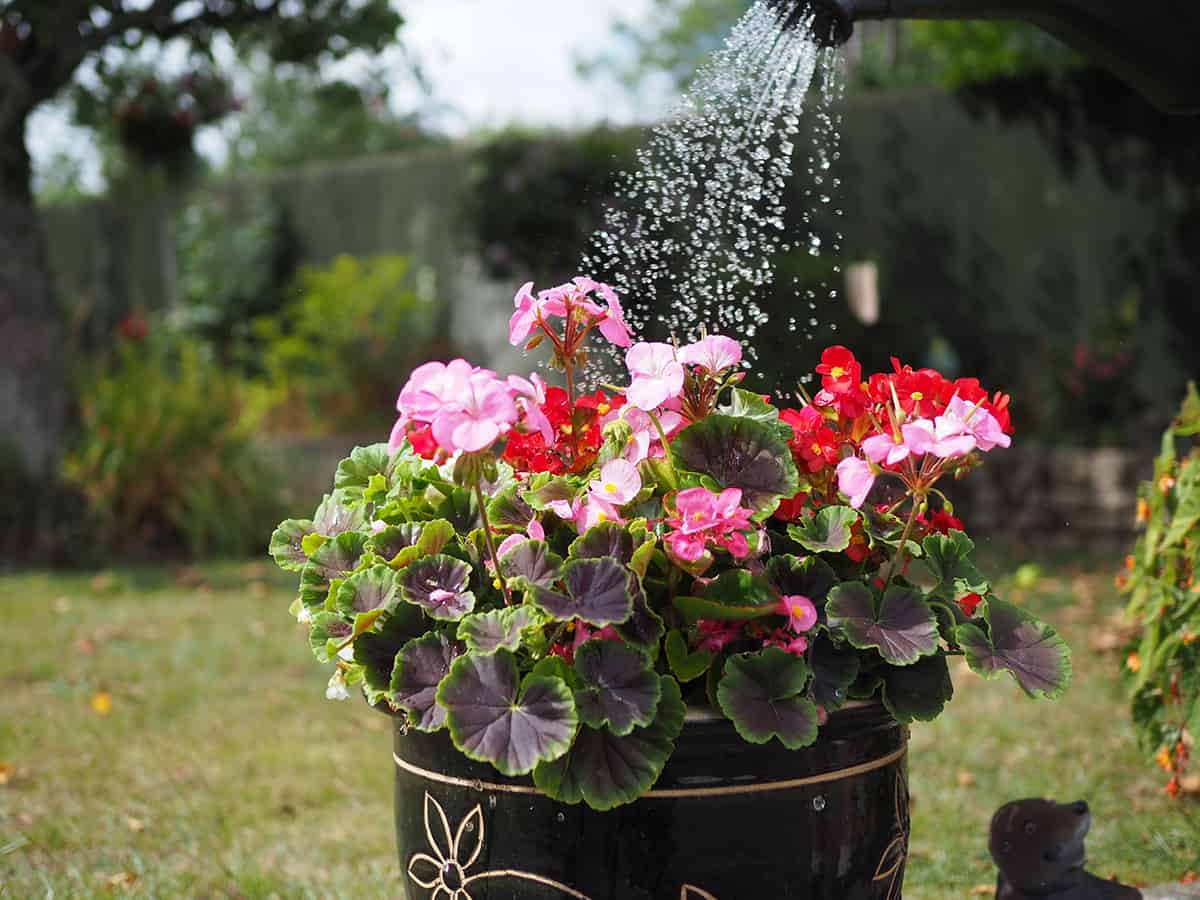
Avoid over-watering, as this can lead to flower bud drop. On the other hand, under-watering can cause the plant to wilt.
During the growing season, keep the soil evenly moist. You can let it dry slightly between waterings, but never allow it to become completely dry. In winter, you should cut back on the amount of water given to your begonias. For tuberous begonias, stop watering them altogether in the fall until new growth appears in spring.
To determine when your begonia needs water, check the soil. Simply place your finger about an inch into the soil. If it feels dry, it’s time to water. Use room-temperature water to avoid shocking your plant. It’s important to water begonias at the base, since wet foliage can lead to diseases.
An excellent trick to ensure your begonias receive adequate water is using the bottom-watering method. Place the pot in a tray filled with water, allowing the plant to absorb water through the drainage holes. This method encourages the roots to grow downwards and helps prevent over-watering.
Temperature and Humidity
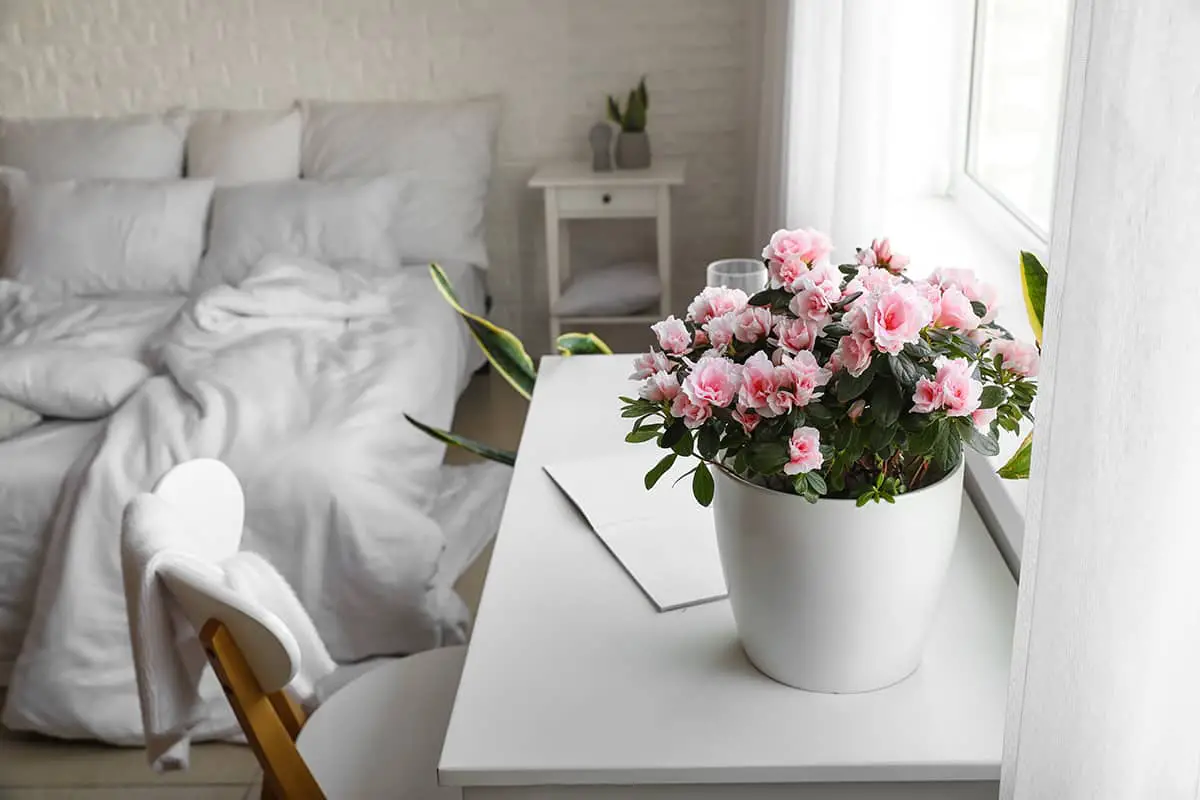
For optimal growth, you should maintain a temperature between 60°F and 80°F during the day. At night, slightly lower temperatures won’t harm your plants, but be careful not to expose them to temperatures below 50°F.
When it comes to humidity, begonias enjoy a moist environment. It’s crucial to maintain a humidity level of 50% or higher to ensure healthy growth. However, avoid misting the plants directly as this may harm them. Instead, spray the surrounding air or place a tray of water near the plants to increase humidity levels.
Fertilizer

Selecting a balanced liquid fertilizer at half strength is ideal for these plants. During their full growth stage, fertilize them at alternate waterings.
Make sure to monitor the moisture of the soil when caring for begonias. Keep the soil evenly moist, but not waterlogged. As soil dries slightly, water your begonia, and reduce watering in winter months. For tuberous begonias, you should stop watering in the fall altogether.
In addition to the balanced liquid fertilizer, begonias can benefit from weekly feedings of half-strength fertilizer. Be cautious not to over-fertilize, as it may cause flower bud drop in tuberous begonias.
Propagation
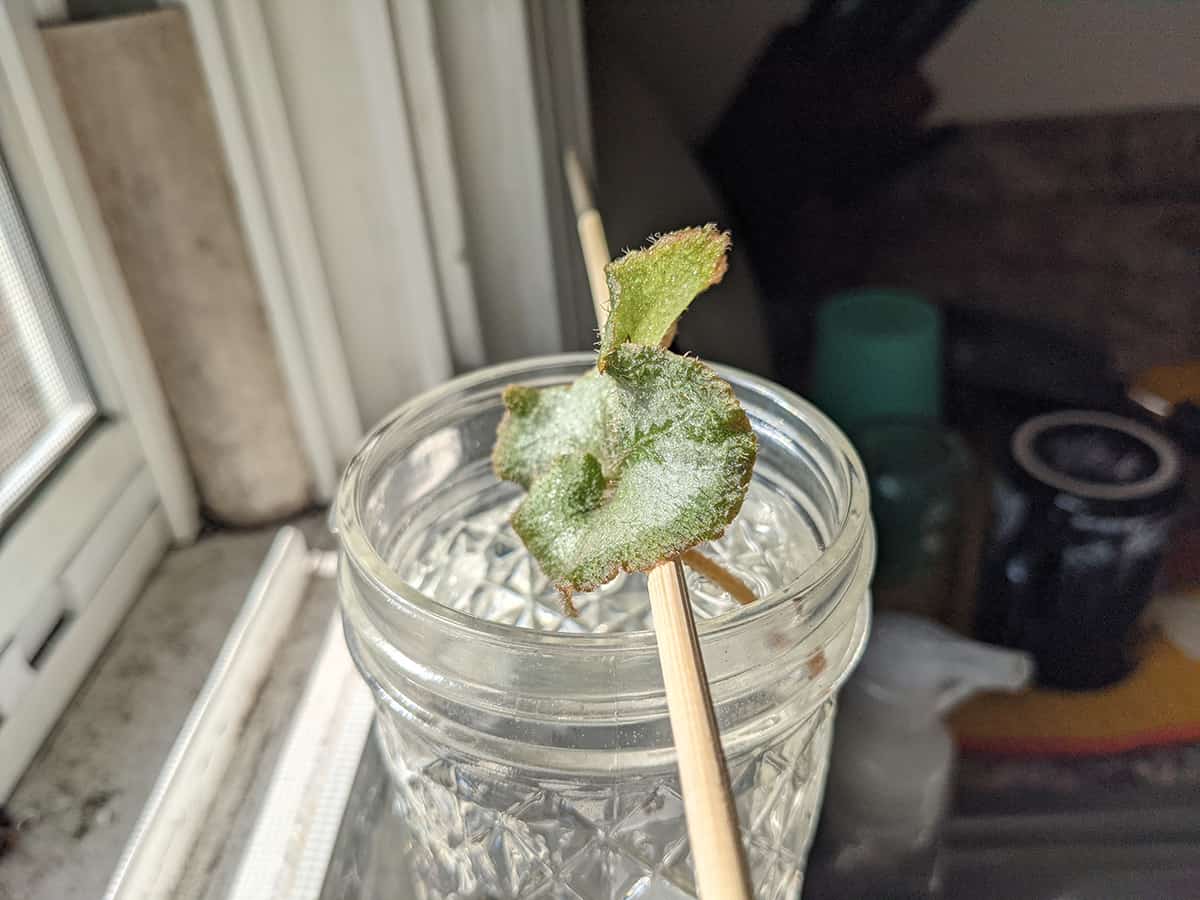
A commonly used method for propagating begonias is through stem cuttings. To get started, choose a healthy 2 to 4-inch long stem from your begonia plant. Make sure to remove the leaves from the bottom half of the cutting. You can root them in moist perlite, potting soil, or other sterile media. This technique applies to most types of begonias.
Another propagation technique involves using leaf cuttings. This method is particularly useful for tuberous and rhizomatous begonias, which can also be propagated through tuber and rhizome cuttings. When using leaf cuttings, ensure that the material is free of pests and diseases.
For those interested in seeds, you can also propagate begonias by seed propagation. When using seeds, begin by gently brushing the anthers of a male begonia flower to obtain golden pollen grains. Transfer the pollen to the stigmas of a female flower for successful pollination. Once the seeds are ready, plant them in a suitable medium.
No matter which propagation method you choose, be patient as begonias can take approximately 3 to 4 weeks for the roots to be well-established.
Pruning
The ideal time to prune your Begonia is during its active growth phase, which usually occurs in early spring to late summer. To start, identify any dead or yellowing leaves and gently remove them using clean pruning shears or scissors. This will encourage new, healthy growth and improve the overall appearance of your plant.
Selectively trim any unruly or overcrowded stems to maintain your Begonia’s shape and size, ensuring you cut at an angle just above a leaf node or joint. This method promotes healthy branching and allows your plant to focus its energy on new growth. Be cautious not to remove more than one-third of the plant’s total foliage at once to prevent shock or stress.
Lastly, remove any blooms that have started to fade or wilt. This process, called deadheading, encourages your Begonia to produce more vibrant flowers throughout the growing season. Make sure to dispose of all trimmed foliage and blooms to maintain a clean environment for your plant.
Potting and Repotting
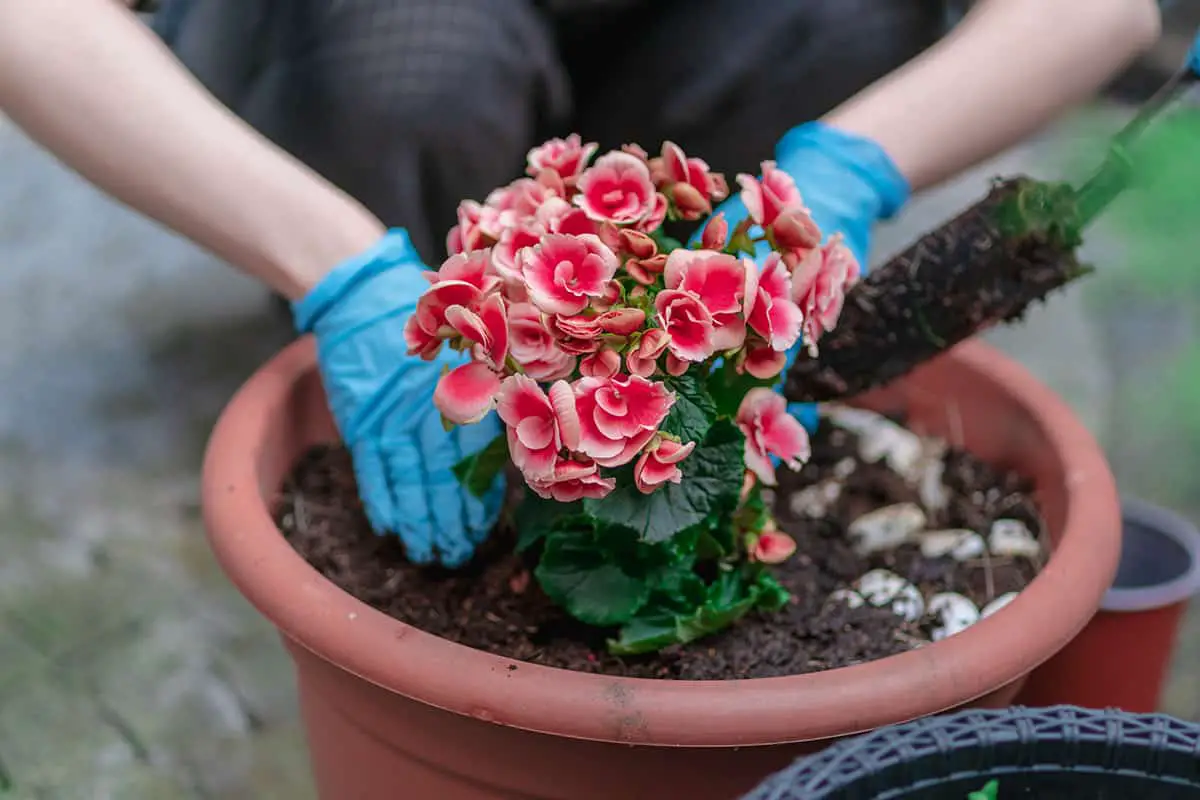
When you begin potting your begonia, choose a container with drainage holes. This is important for proper water management. Fill the container with a well-drained peat-based potting mix, which is ideal for begonias. The pH of the mix should be between 5.7 and 6.4.
Your begonia’s root system is quite delicate, so handle it with care during repotting. Repotting is necessary when the plant becomes pot-bound, which means the roots start to surround the root ball. Repotting is best done during the spring, when plant growth is active. Divide your plant carefully when repotting, to avoid damaging the begonia’s fine roots.
Use a similar potting mix as described earlier for repotting. After placing the begonia into its new container, gently firm the soil around the roots. Water the repotted plant thoroughly to help settle the soil and minimize shock to the plant.
Common Problems & Troubleshooting
Begonias are beautiful plants, but they can encounter a few issues. Let’s explore some common problems and ways to address them.
One issue is overwatering, which can lead to root rot. Be cautious with your watering habits and ensure that the soil is well-draining to avoid this issue. On the other hand, underwatering can cause leaves to wilt and drop. Keep the soil consistently moist, but not soggy. Check the soil regularly to maintain the right moisture levels for your begonias.
Pests, such as aphids and mealybugs, can attack begonias and have harmful effects on the foliage. To prevent this, inspect the plants routinely and use insecticidal soap or neem oil when necessary. Make sure to treat any pest problems as soon as they appear to minimize damage.
Another common problem is Botrytis Blight_, which causes the cuttings to rot at their base. To manage this issue, maintain proper air circulation by spacing your plants adequately and removing dead flowers and leaves. If you notice any gray, fuzzy fungal growth, act quickly and remove the affected parts.
Humidity is another factor that can impact begonia’s health. High humidity can cause powdery mildew, which appears as a white, powdery substance on the leaves. It can be managed by maintaining proper air circulation and watering to minimize humidity. Conversely, low humidity levels can cause the leaf edges to dry and curl up. Ensure your plants have enough moisture in the air by using a humidifier or placing a tray of water near them.
Begonias Varieties
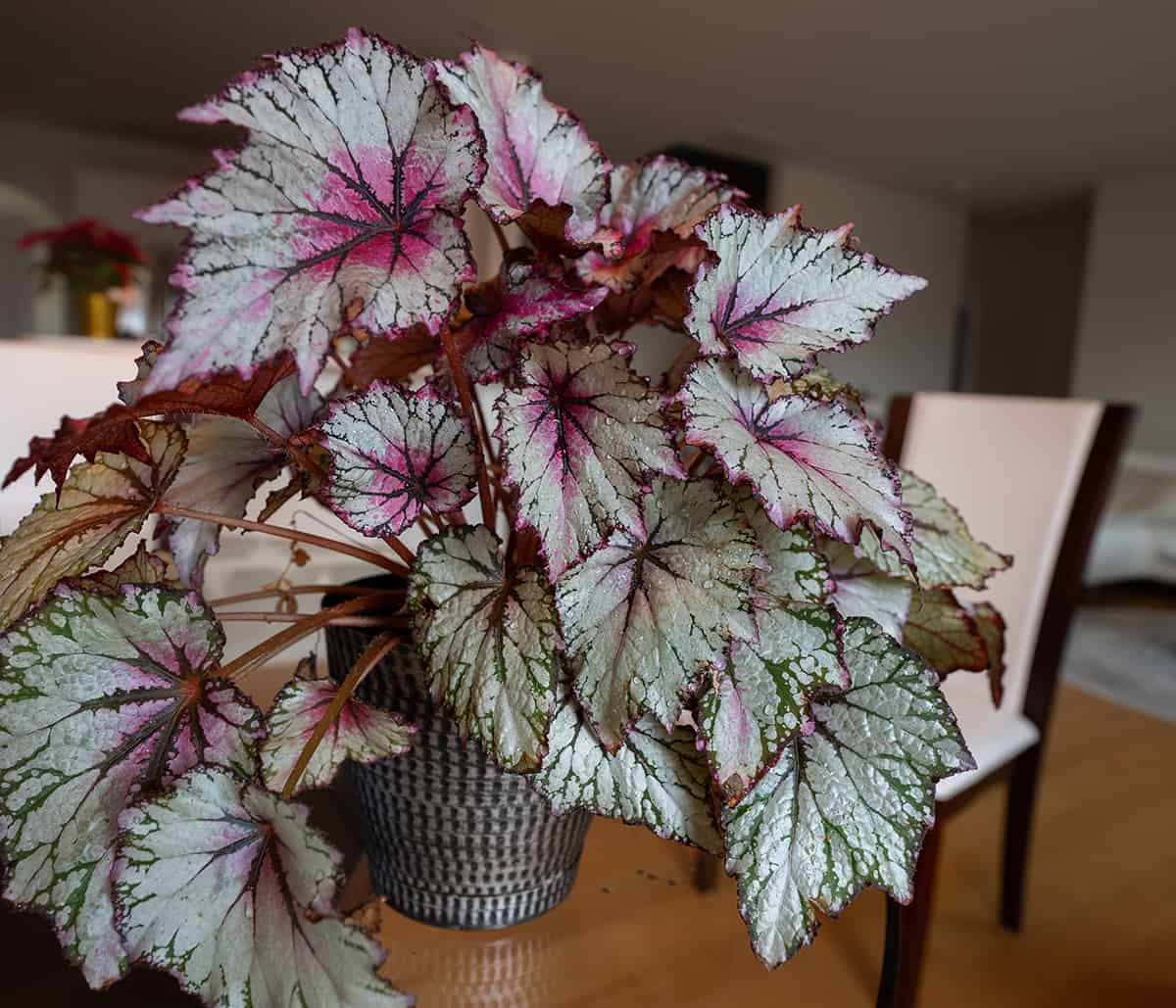
Begonias are incredibly diverse, offering a range of appearances and growth habits. First, we have the rex begonias, which boast stunning foliage, varying in color, shape, and texture. Typically, these plants grow to a height of 12-24 inches, making them ideal for indoor home landscaping.
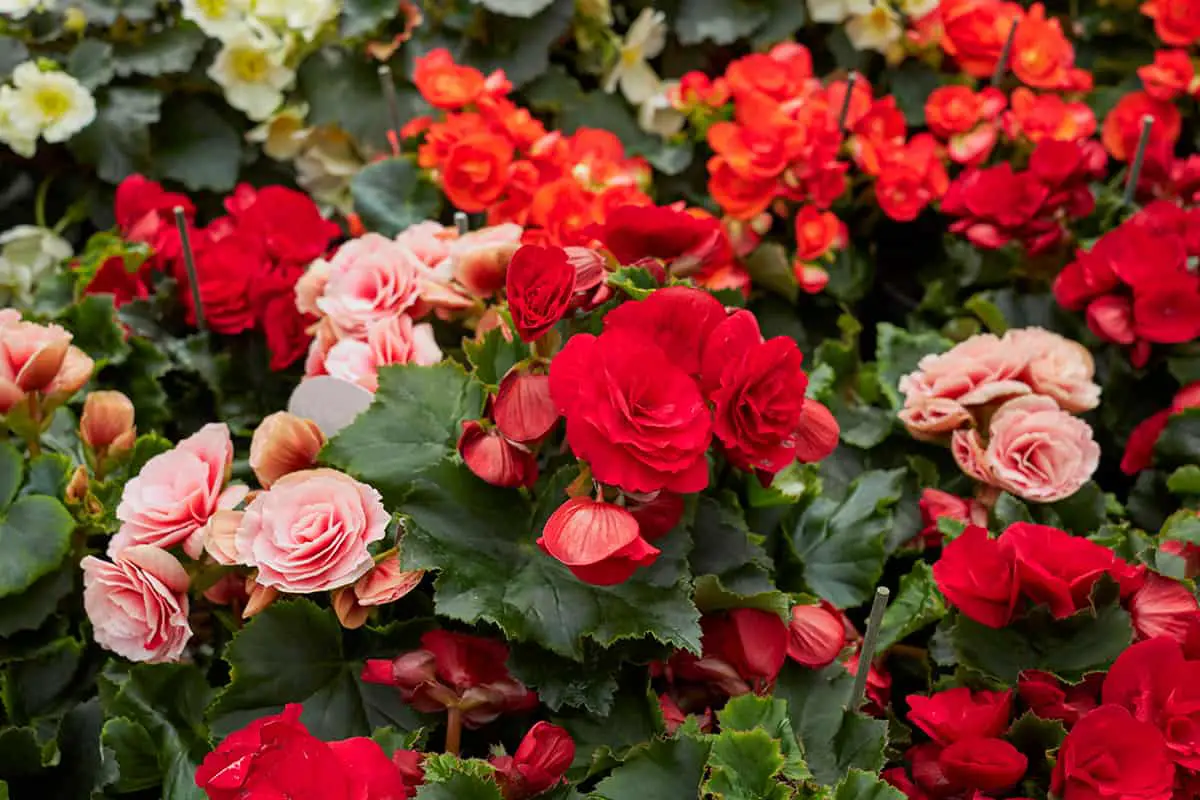
Next, consider the tuberous begonias, known for their exquisite flowers. They thrive in partial shade and require frequent watering and light fertilization. Keep in mind that tuberous begonias perform best in the upper Piedmont and mountain areas, as they struggle in hot and humid regions.
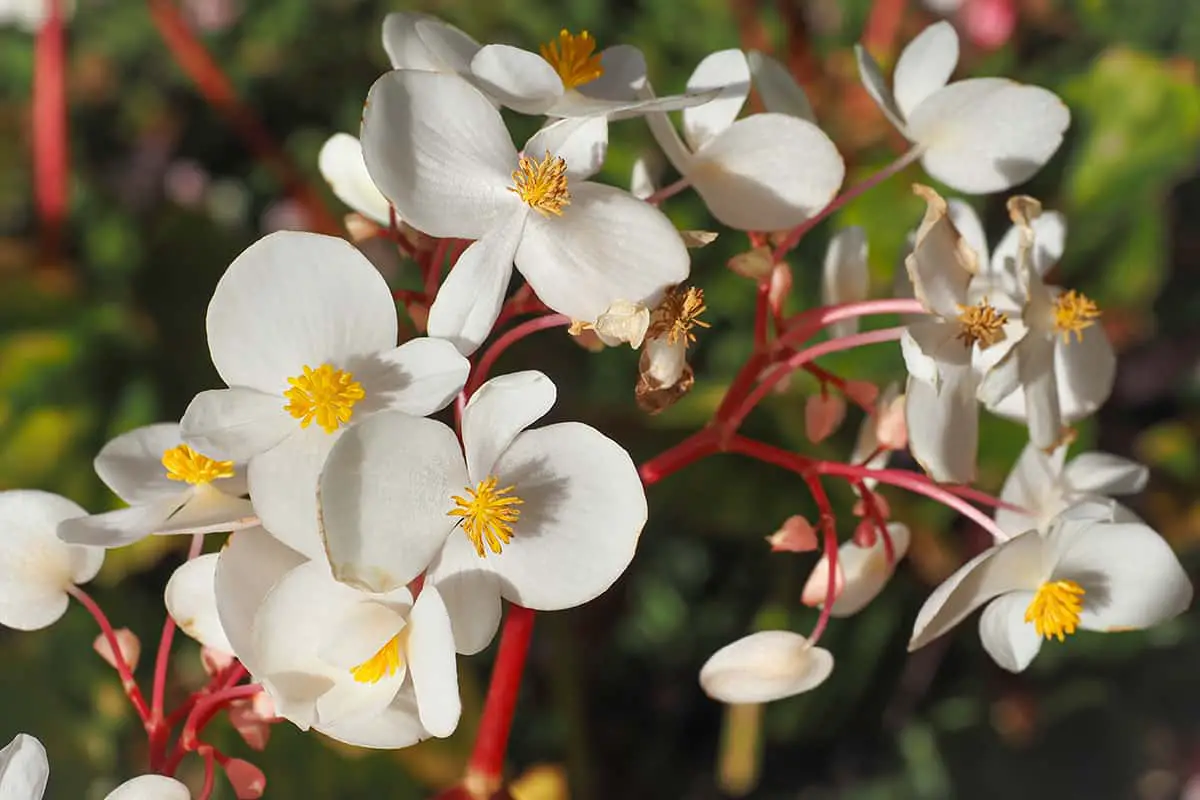
If you’re looking for versatility, the dragon wing begonia is an excellent option. This adaptable plant can flourish both indoors and outdoors, featuring vibrant, wing-shaped leaves. Ensure a warm environment of 60-80°F and consistent moisture for optimal growth.
For those who prefer indoor plants, the growing begonias indoors category offers a variety of species to choose from. Among these, the tuberous begonias come in various forms, with some displaying large saucer-size flowers, while others suit hanging baskets, featuring multiple trailing stems covered in flowers.
How to Encourage Begonias to Bloom
To help your begonias bloom, you should first ensure they are receiving optimal sunlight. Most begonias thrive with bright, indirect light. Place your begonia near a window with filtered light or use a sheer curtain to diffuse direct sunlight. Avoid exposing your begonia to intense sun, as this can scorch the leaves and hinder blooming.
Make sure to provide your begonias with the proper nutrients to encourage flowering. Fertilize your begonias every two weeks during the growing season with a balanced fertilizer, but do not over-fertilize. Over-fertilizing can lead to excessive foliage growth at the expense of blooms. To promote flowering, apply a higher phosphorus fertilizer once every four weeks.
Maintaining the correct watering schedule is key to supporting begonia blooms. Allow the potting soil to dry slightly between waterings; continuously moist soil can result in root rot and weakened blooms. Keep an eye on your begonia’s leaves, as they can indicate if they are receiving too much or too little water. Wilted, yellowing leaves usually signal over-watering, while dried, curled leaves typically mean your plant needs more hydration.
Lastly, be sure to regularly remove spent flowers and dead leaves from your begonia. This process, called deadheading, encourages new growth and continuous flowering. By keeping your plant neat and healthy, you’ll be providing an ideal environment for it to produce vibrant, long-lasting blooms.
